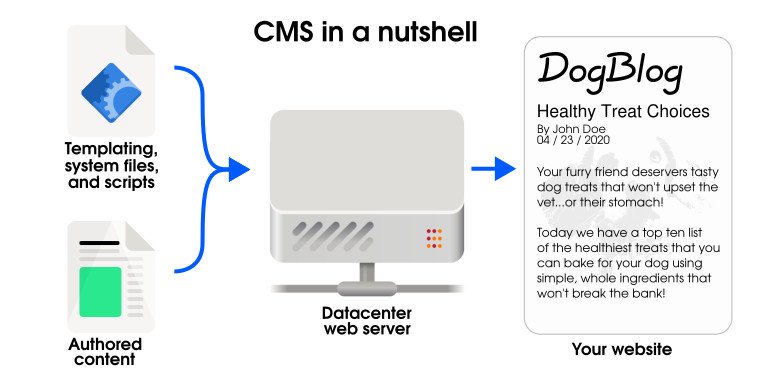
When the internet was young and the technologies powering it were less mature, most websites were little more than a collection of documents that linked together and could provide information about a given subject. These documents were formatted using a template langauge called HTML. Not long after users started adopting the web, developers began programming servers to render that HTML dynamically. Some parts of the documents were even interpreted by the web browser as styling instructions - which helped to give websites personality. Around the same time, early versions of Javascript were introduced to give these documents interactivity that did not require loading a brand new page with every click.
Certain problems began to emerge for many early websites. A single file was now responsible for screening incoming connections, providing styling instructions, containing the content itself, and offering interactivity with early Javascript. For many website maintainers, adding a new page meant duplicating much of this data and modifying it to accommodate the new content. If a system change was required, that change would need to be tediously applied to every file on the website. Mistakes were made, and on multiple levels.
A website configured in this way is very easy to break and difficult to maintain in the long run. A simple website can still take advantage of a system like this, but only when the requirements are the bare minimum.
Enter the content management system

Content management systems (CMS) quickly became popular for websites of all sizes and complexities. The CMS can be responsible for handling user accounts, dynamic page rendering, script loading, styling, and fetching and displaying content. This allows for the authors and publishers to focus less on the technical details and more on the content itself. Once installed, the CMS does not need to change when new content is to be published. Content can be authored and published using interfaces provided by the content management system directly. The content is stored separately from system files, typically securely in a database server, and the document is rendered dynamically when a user visits the page.
There are countless content management systems to choose from. Most of them are freely available to use and modify. Butsko Business Solutions finds that it is better to fit a content management system to the user rather than the other way around. Let's have a quick talk about your requirements and we'll take it from there.
